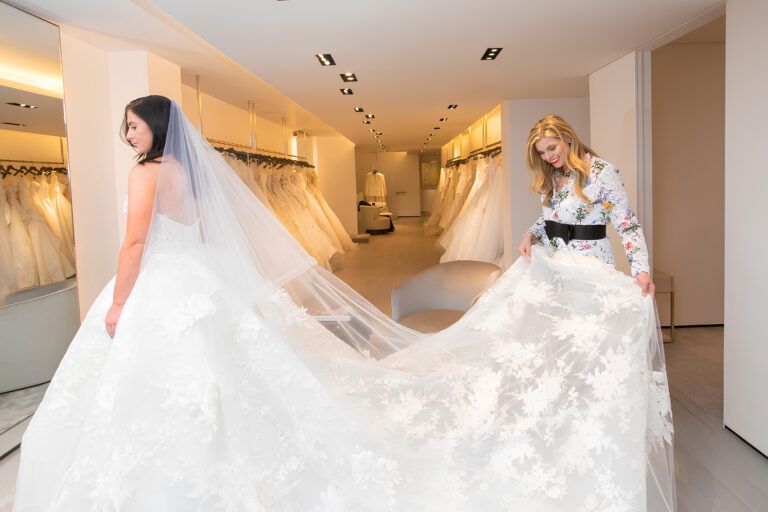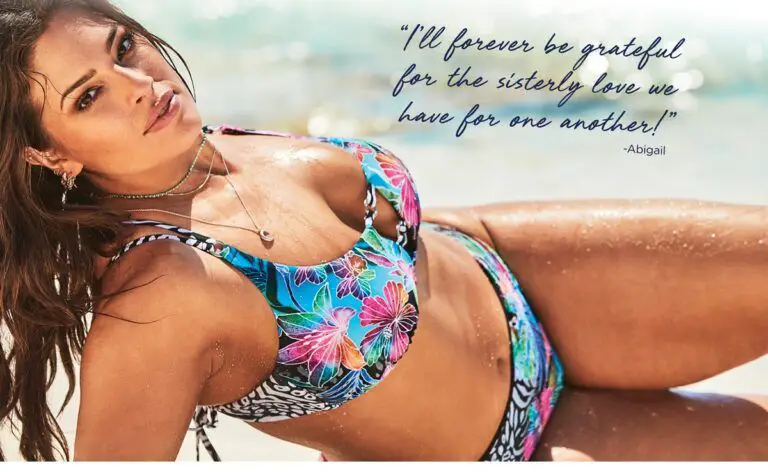Even if you’ve never heard the term curve-washing before, you have likely encountered it in fashion ads or while searching for plus size clothing. Curve-washing is a deceptive business practice that includes using plus size models in ads or campaigns when the brand or designer doesn’t actually carry plus sizes.
This also applies when brands use size-inclusive language to drive traffic to their brand but they only carry a limited plus size range.
Ok, but… Give me some examples of Curve-Washing
Possibly the most well-known example of curve-washing is luxury brand Moschino. Moschino has multiple custom-made garments for Lizzo for red carpet events. Of course, Lizzo looks absolutely amazing in these designs.
However, if you were to go to Moschino’s website, you’d learn they only offer items up to a size 14. They do have a size 16 listed on their size chart, but no items available in that size. This sends a message to plus size consumers that they are only worthy of clothing if they are already an famous icon.
Luxury brands aren’t the only offenders. Many smaller brands use similar tactics. Cider, for example, only recently updated their sizing to include a size 4X/US 24. Prior to this, their ads frequently used language touting “inclusive sizing for every body,” but only offered up to a US size 20, which they considered a 4X at the time.
Another great example is H&M’s “body collection.” This collection claims to be “all about embracing every body and celebrating your amazing curves.” However, when looking at this collection, it is only offered up to a size 22 or XXL. This is an interesting choice of limiting sizes because H&M does offer up to a US 30/4X in their plus size range.

On the flip side, we want to take the time to appreciate the brands who feature plus size models in their ads and campaigns, have an inclusive size chart, and are doing great things for the community.
Universal Standard has one of the most inclusive size charts around, going from a size 00-40. They are unique in their sizing because a Medium is a size 18/20. Setting the average size of a US woman as the “medium” just makes sense. The sizes then go up and down from that set point.

TikToker McKenna (@fatgirlfab) did a short series in 2022 on brands guilty of curve-washing. This included brands like Billabong and Roxy, which have long been considered straight-size-only brands. These brands use plus size models in their ads, only offer up to a size 14 or 16, and claim to have “styles for every body.”
McKenna says, “how are brands able to get away with saying things like ‘a style for every body’ when they clearly don’t? Going up to a size XXL is not being size inclusive, that does not cover all body types. Actually, it doesn’t even cover a majority of body types… and this marketing is wrong and exploitative.”
Why is Curve-Washing Harmful?
Curve-washing is harmful to the plus size community for a few reasons. First, it gives the illusion that more plus size clothing is available than what is actually out there. About 20% of the apparel market is geared toward plus size women even though ~70% of US women are at least a size 16 (Christel et al. 2017).
Secondly, there are many straight-size people who specifically look for size-inclusive brands to shop from. Curve-washing can give them a false sense of security that they are purchasing from a brand that wants to include all bodies.
Lastly, being size-inclusive is a hot topic right now. It drives more traffic to their websites because of the inclusive language, only for plus size women to be let down when their size is not an option.
So, then why do brands do it?

So, why are brands using this type of PR strategy? It creates a positive media outlook on the brand for appearing to be size-inclusive without putting forth the effort and money of delving into the plus size space.
For plus size folks that are familiar with curve-washing, it is seen as very performative. Unless brands want to put in the work to change their brand culture, research proper fit and marketing to plus size people, they should not be using our bodies as click bait.







Forever 21 they sure took me in with there sizes.
There 3x has to be a regular meduim. And the return process is horrible.
I Hear you and SEE you
Outstanding Chris!!!
The 4x = a size 20 thing drives me crazy every time. And then what’s bad is you click on it once, find out you can’t buy anything and then they are in your feeds forever. I wrote to a company once and said how can you say you fit every body when you don’t fit mine? I got the usual response about hoping to expand sizes.
MeUndies is one that drives me nuts. They go up to 4XL but, at a US size 22, I’m too big for that.
As a start up brand relying on POD, I’m having a really difficult time finding truly size inclusive clothing items that aren’t just leggings or t-shirts. I’ve found some lovely dresses that go up to a size 6x. I haven’t found someone to try the 6x for me yet but the 2x is true to size. I’m trying really hard to be size inclusive but it’s super, super frustrating. So many of the POD brands stop at 3x IF that and call it a day.
I’m trying but some days it feels like I’m ‘curve washing’ when my intent is NOT to do that. I really need to find more plus size influencers to help me show off some of what I do have. I’m definitely not giving up my quest. I will keep looking, and keep hounding the POD companies I do work with, to be more size inclusive.
I hate curve-washing so much! I didn’t know that there was a name for it, so thank you for giving me a great new term to add to my arsenal of WHY I HATE THE STANDARD-SIZE FASHION INDUSTRY! 🙂
It was good to see this in print. The mainstream fashion industry has been arrogant for many years. The execs and the designers who make the decisions, by and large, hate the fact the hat they are making large sizes. It is outrageous to claim inclusivity for ALL, and ignore the truly larger customers. I wish that more of them were like Universal Standard.